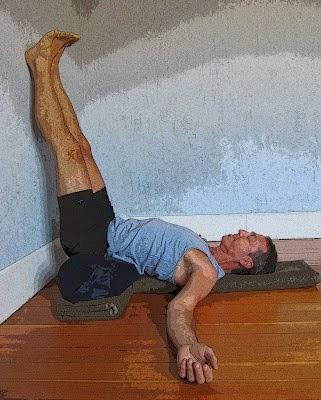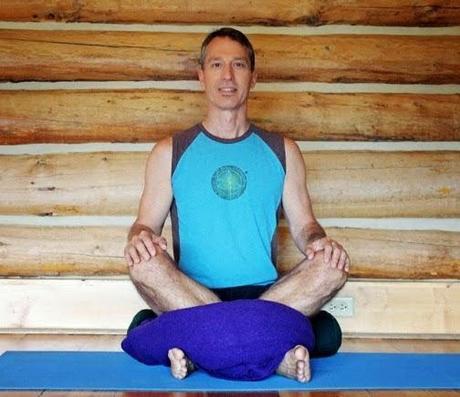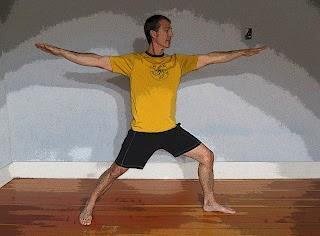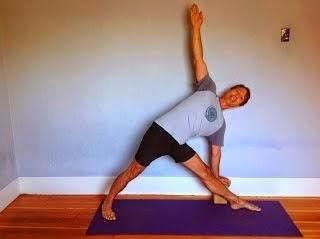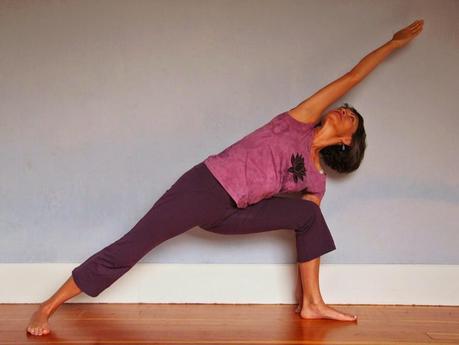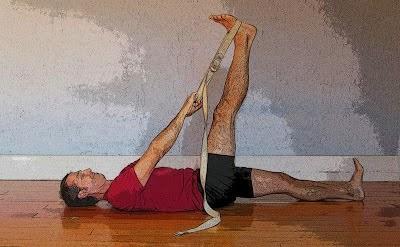Here's our new Brain Health sequence, which combines physical exercise and stress management to promote health of the organ in general with "brain aerobics" to challenge you mentally. If you want to practice this sequence on a regular basis, you'll need to change it up periodically (see Yoga Sequences Are Brain Aerobics for information).
Next, choose a single yoga sutra, either from your Yoga Sutras book or by finding a sutra online, and read the Sanskrit aloud. Then, repeat the translation aloud three times in a row.
Now you’re ready for your asana practice. Set you mat up so the short end is touching a wall. Then stand at the front of your mat in Mountain pose, facing away from the wall.
2. Mini Sun Salutations (Surya Namaskar): Practice the Sanskrit name for Sun Salutations. For general instructions on how to practice our Mini Sun Salutation, see Mini Sun Salutation. Start by practicing one round with your eyes open. Then attempt to do several rounds with your eyes closed, relying on senses other than vision to guide you. Because exercise is as important for the brain as it is for the heart, these Sun Salutations enhance basic brain health as well as stimulating brain function.
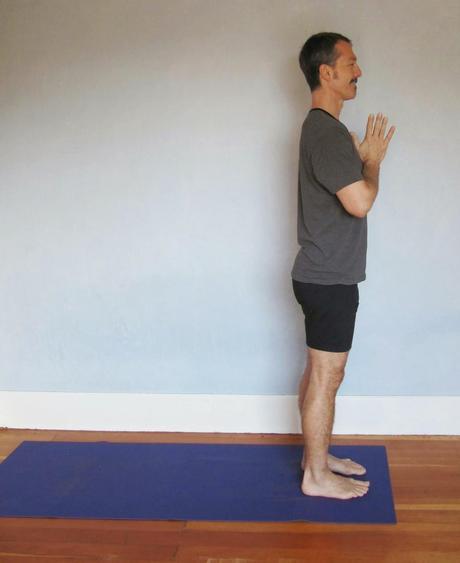 3. Warrior 2 (Virabhadrasana 2): Practice the Sanskrit name of the pose. Then, facing the long edge of your mat, step your feet wide apart so that the outer edge of your left foot is flush against the wall (or only the heel if this is a problem for your hips). Then turn your right foot and leg out 90 degrees, towards the center of the room. Now, bend your right knee and raise your arms to come into the pose. Instead of looking toward your front arm, look back at your left hand as you enter, stay in the pose for 6-12 breaths, and then exit the pose. Turn to the other long edge of your mat and repeat on the second side.
3. Warrior 2 (Virabhadrasana 2): Practice the Sanskrit name of the pose. Then, facing the long edge of your mat, step your feet wide apart so that the outer edge of your left foot is flush against the wall (or only the heel if this is a problem for your hips). Then turn your right foot and leg out 90 degrees, towards the center of the room. Now, bend your right knee and raise your arms to come into the pose. Instead of looking toward your front arm, look back at your left hand as you enter, stay in the pose for 6-12 breaths, and then exit the pose. Turn to the other long edge of your mat and repeat on the second side.
Imagine the Wall!
4. Standing Forward Bend with the Wall (Uttanasana): Practice the Sanskrit name of the pose. Now, stand with your back to the wall with your hips and shoulders touching the wall but your heels about 12 inches away from the wall. Bend your knees slightly and then tip forward from your hip joints to come into the forward fold, keeping your buttocks flesh on the wall and lowering down as far as you safely can. Caution: If you have osteopenia or osteoporosis, perhaps come only half way down. Stay for 12 breaths, and come up on an inhalation.5. Triangle Pose (Utthita Trikonasana): Practice the Sanskrit name of the pose. Then, turn around on your mat so you can practice the left side of Triangle pose first. Facing the long edge of your mat, step your feet wide apart so that the outer edge of your right foot is flush against the wall (or only the heel if this is a problem for your hips). Then turn your left foot and leg out 90 degrees, towards the center of the room. Next, inhale your arms up to parallel with the floor, and keeping your attention on your left hand, come into full Triangle pose, using a prop for your bottom hand if necessary. As you stay in the pose for 6-12 breaths, keep looking at your left hand (your bottom hand) and continue to focus on your left hand as you come out of the pose. Then turn towards the other long edge of your mat and repeat the pose on the right side, following your right hand as you move into, stay in, and move out of the pose.Imagine the Wall!
6. Powerful Pose (Utkatasana): Practice the Sanskrit name of the pose. Then, standing as you did for Wall Standing Forward Bend, keep your buttocks on the wall as you inhale your arms overhead, bend your knees, and tip your torso and spine forward over your thighs into the Powerful pose shape. See Powerful Pose for instructions about Powerful pose. Stay for 6 breaths.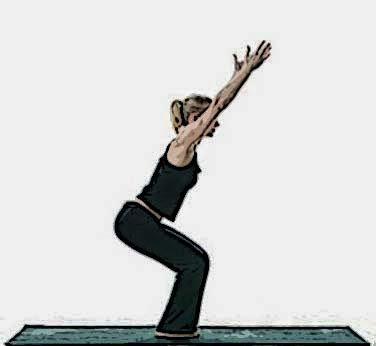
Imagine the Wall!
7. Extended Side Angle Pose (Utthita Parsva Konasana): Practice the Sanskrit name of the pose. Next, align your feet for the pose the same way you did for Warrior 2, with your left outer foot (or heel) at the wall. As you come into the pose to the right, using a prop for your bottom hand if necessary, keep your eyes fixed on your right hand (your lower hand), throughout the pose. For additional instructions, see Upper Body Strength Practice Stay for 6-12 breaths, and repeat on the second side.Imagine the Wall!
8. Half Downward-Facing Dog Pose at the Wall (Ardha Adho Muka Svanasana): Practice the Sanskrit name of the pose. Then stand facing the wall with your hands on the wall at shoulder height. Bend your knees a bit and slowly back your feet and hips towards the center of the room until your arms and torso are parallel with the floor and your hips are positioned directly over your heels. If your back and hamstrings permit, slowly straighten your legs without rounding your lower back towards the ceiling. Float your head between your arms as you actively push your hands into the wall and your hips away from the wall. Stay in the pose for 6-12 breaths. To come out, bend the knees a bit and walk the feet back towards the wall as you lift your torso up to vertical. For additional instructions, see Half Downward-Facing Dog Pose at the Wall.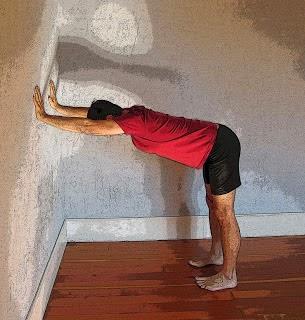
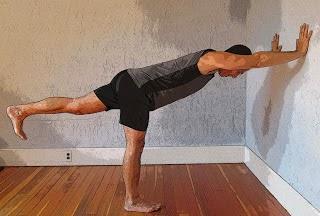
Imagine the Wall!
11. Legs Up the Wall Pose (Vipariti Karani): Practice the Sanskrit name of the pose. Then, set up for a supported version of Legs Up the Wall pose, using whatever propping would feel good for you today. See Legs Up the Wall pose for instructions on practicing this pose. After going up into the pose, change the typical position of your arms today, and notice how that affects the pose on the level of sensation, breath, and emotions. Stay for 5-10 minutes if your schedule permits. This pose is great for managing stress levels, which is important for maintaining brain health as it helps reduce strokes (see Brain Health Interview with Ram Rao).